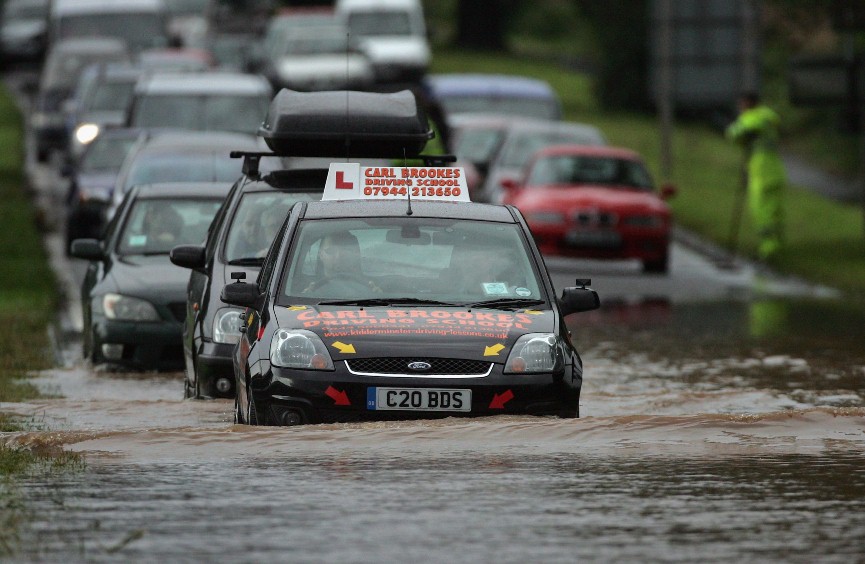

Under the lead of the European Commission’s Joint Research Centre and the Dartmouth Flood Observatory (University of Colorado), the Global Flood Partnership was launched earlier this month at the European Centre for Medium-Range Weather Forecasts (ECMWF) in Reading, UK. It is a unique international forum aimed at developing a global flood observation and modelling infrastructure for managing and forecasting flood risk at a global scale. It will provide operational and globally applicable flood monitoring and, at a later stage, forecasting tools and services, as well as short- and long-term flood risk assessment tools, which will be complementary to national capabilities. This will be achieved by bringing together the scientific community, satellite and weather service providers, national flood and emergency management authorities, humanitarian organisations and donors.
The JRC has a unique expertise in this area, as it contributed to the set up and managed the development of the first operational hydrological network in Europe, the European Flood Awareness System (EFAS). EFAS is an early warning system at a pan-European scale to provide flood information 3-10 days in advance, allowing Member States and the Commission to be better prepared for potential flood crises at international scale. Since 2012, it operates under the umbrella of the Copernicus emergency management service and run by Member States organisations.
The JRC, in collaboration with the Dartmouth Flood Observatory, has also developed the Global Flood Detection System (GFDS) which provides valuable up-to-date information on the impact and extent of the floods. Its regional daily flood maps are based on an innovative procedure which turns satellite observations into a quantitative assessment of surface water. The advantage of this system over normal optical image is that it provides information independently from weather conditions.
In Europe, the World Bank has estimated that hydro-meteorological information and early warning systems save hundreds of lives and avoid between 460 million and 2.7 billion Euros of disaster losses per year (figures for 2012). While early warning systems are well established in the European Member States and are complemented by continental-scale systems, many regions around the world do not have access to this kind of information. The potential for savings in losses and damages through early warning systems in developing and less developed countries is estimated to be between 4 and 36 billion USD per year.
The Partnership establishes strong links with core international stakeholders such as the World Bank’s Global Facility for Disaster Risk Reduction, the United Nations (UN) World Food Program, the UN Office for Coordination of Humanitarian Affairs and UN Office for Disaster Risk Reduction. It also brings together national flood authorities as well as meteorological authorities (e.g. the World Meteorological Organisation, the European Centre for Medium-Range Weather Forecast and the UK Met Office), space agencies (ESA and NASA), rapid flood mapping services (e.g. UNOSAT and Copernicus) and regional operational response centres (including the Emergency Response Coordination Centre of DG ECHO).
Florian Pappenberger, Principal Scientist at ECMWF and EFAS Computational Centre Lead, said:
“From the scientific point of view, it is the only forum where the meteorological, hydrological, remote sensing and disaster management communities meet to discuss floods at global level, and is attended by top scientists from Europe, America, Asia and Africa. Participation of NASA officials in charge of research funding shows the leverage that the GFP may have on shaping future research calls both in US and EU.”
Background
On the initiative of the JRC and the Dartmouth Flood Observatory, key personnel from the international scientific community have met over the past four years to discuss global flood forecasting and monitoring systems within the framework of the Global Flood Working Group. During this period, the working group extended their dialogue to include international response organisations as well as meteorological authorities and other public and private stakeholders in flood management.
Drawing upon the December 2012 recommendations of the JRC-organised meeting of the Senior Officials of the Carnegie Group countries, the United Nations and the World Bank, the Global Flood Working Group concluded in their annual meeting (Washington DC, March 2013) that the dialogue must be turned into action, and to start building global flood forecasting and monitoring systems.
The participants developed therefore the concept of the Global Flood Partnership, which was kicked-off during the 4th meeting of the Global Flood Working Group hosted by the European Centre for Medium-Range Weather Forecasting in Reading (UK) in March 2014.
International initiatives such as the Flood Initiative (UNESCO, WMO, UN-ISDR), the Hydrological ensemble prediction experiment (HEPEX), the Committee on Earth Observation Satellites (CEOS) Flood Pilot and the OECD Global Science Forum are also represented in the Partnership, as are other public and private stakeholders in flood management, including reinsurance and the commercial space industry.
Links:
Global Flood Partnership: http://portal.gdacs.org/Global-Flood-Partnership
European Flood Awareness System: http://floods.jrc.ec.europa.eu/
Global Flood Detection System: http://www.gdacs.org/flooddetection/
